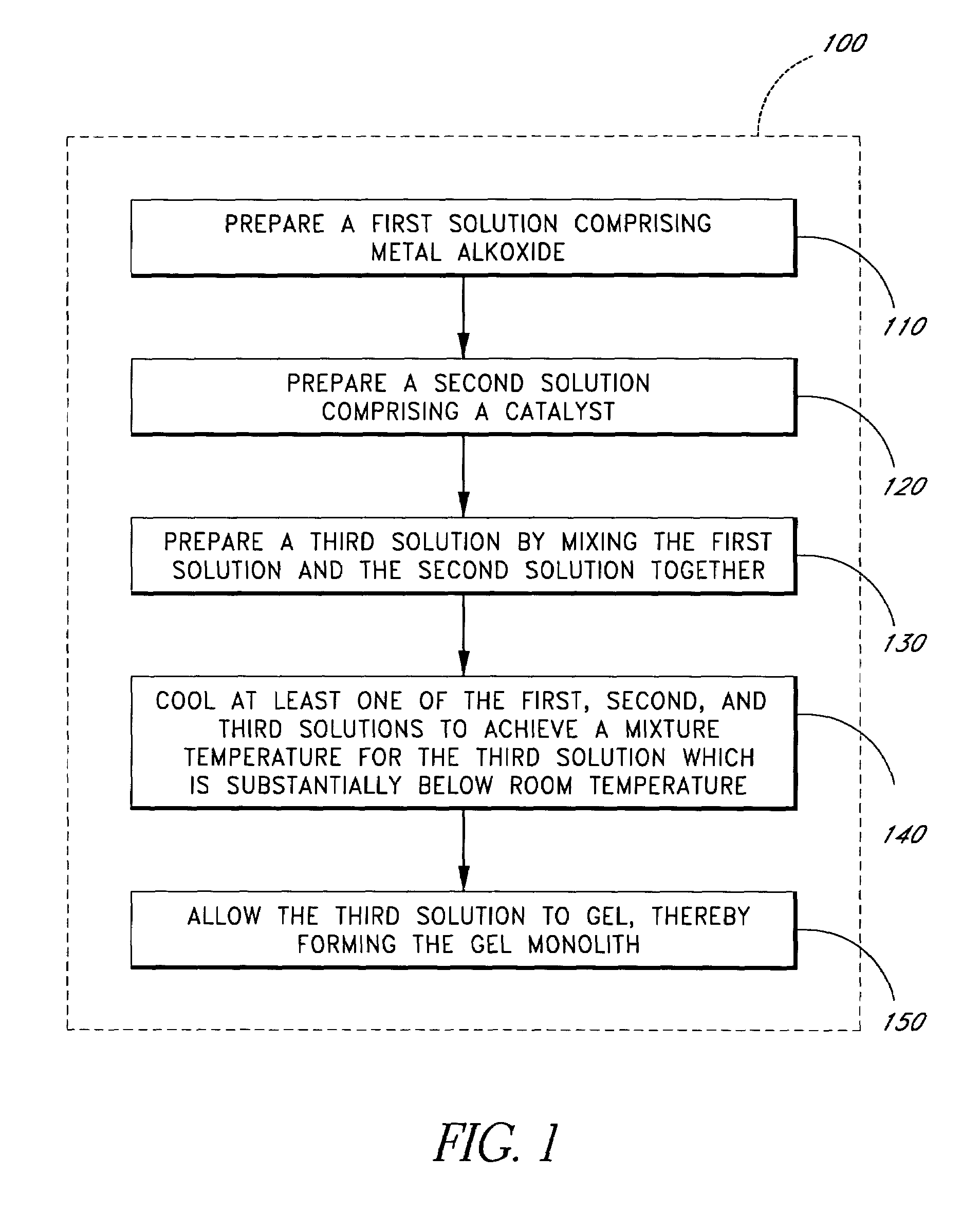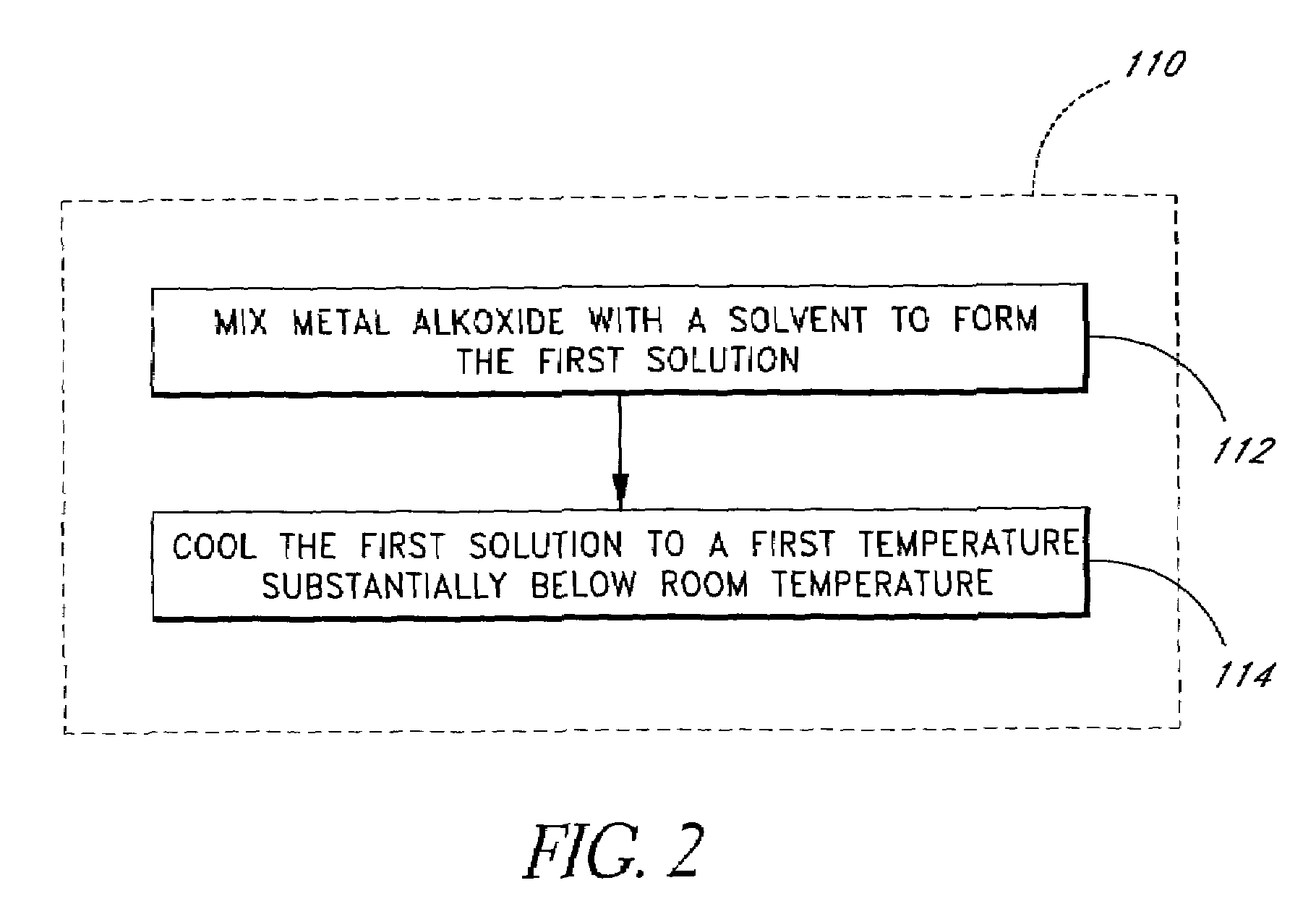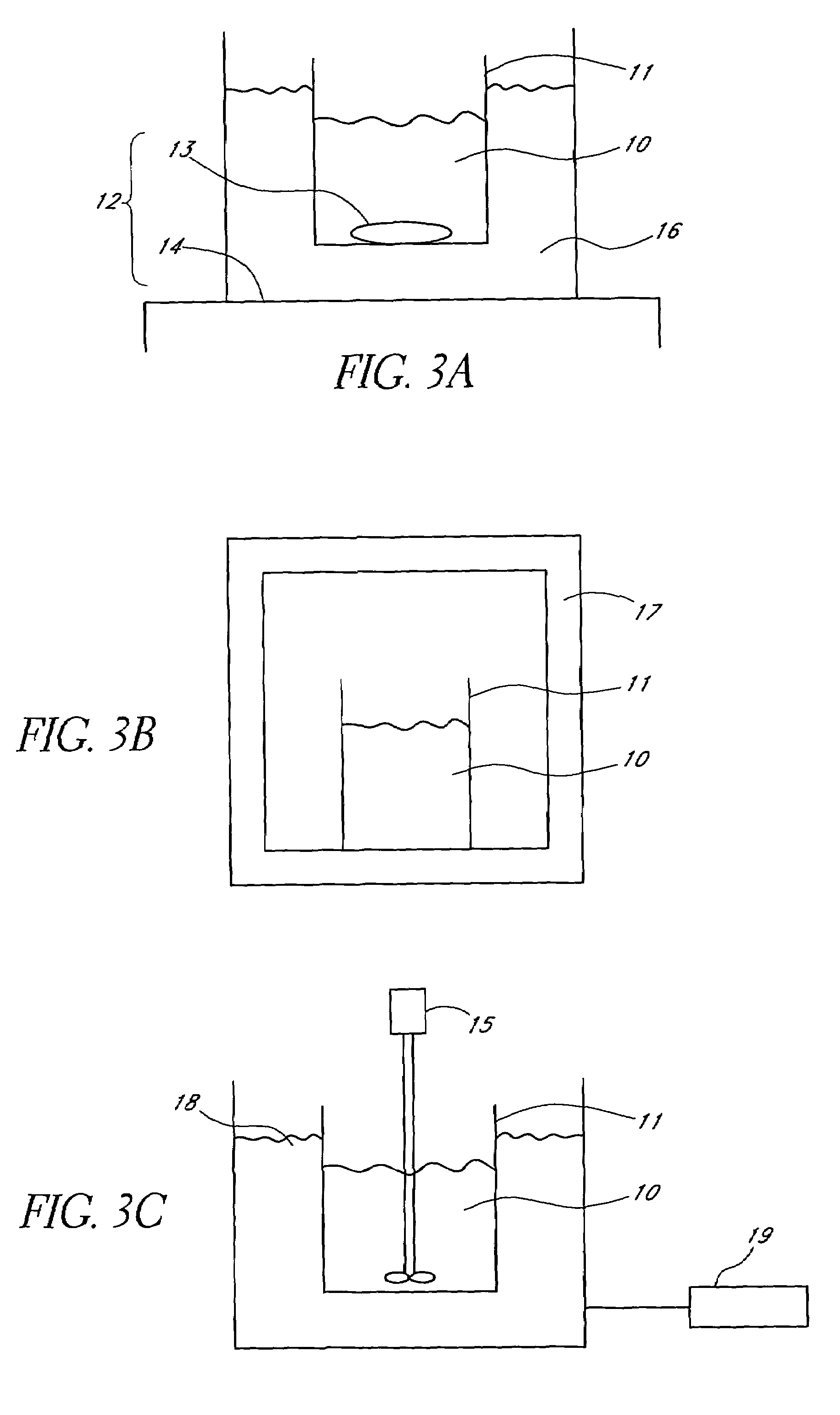Sol-gel process utilizing reduced mixing temperatures
a technology of mixing temperature and gelation time, applied in chemical/physical processes, sedimentation separation, inorganic chemistry, etc., can solve the problems of inability to manufacture products, inability to meet the requirements of high-temperature processes, etc., to achieve the effect of prolonging the gelation tim
- Summary
- Abstract
- Description
- Claims
- Application Information
AI Technical Summary
Benefits of technology
Problems solved by technology
Method used
Image
Examples
Embodiment Construction
[0024]During the drying of a large gel monolith, the gel monolith shrinks in size, and capillary forces in the gel ports arise as the liquid content of the gel monolith is reduced. The tendency of gel monoliths to develop cracks is dependent on these capillary forces. For example, U.S. patent application Ser. No. 09 / 615,628 by Wang, et al. (which issued as U.S. Pat. No. 6,620,368 on Sep. 16, 2003), entitled “Sol-Gel Process for Production of Oxide-Based Glass and Ceramic Articles,” which is incorporated by reference herein, discloses a process that reduces the influence of these forces. The process comprises removing liquid from the pores of the gel monolith such that the outer region of the gel monolith is not dried before the inner region of the gel monolith is dried, thereby avoiding inhomogeneities in the capillary forces which cause stresses and cracking of the gel monolith.
[0025]Because the magnitude of the capillary forces is a function of the sizes of the pores in the gel mo...
PUM
| Property | Measurement | Unit |
|---|---|---|
| temperature | aaaaa | aaaaa |
| temperature | aaaaa | aaaaa |
| temperature | aaaaa | aaaaa |
Abstract
Description
Claims
Application Information
 Login to View More
Login to View More - R&D
- Intellectual Property
- Life Sciences
- Materials
- Tech Scout
- Unparalleled Data Quality
- Higher Quality Content
- 60% Fewer Hallucinations
Browse by: Latest US Patents, China's latest patents, Technical Efficacy Thesaurus, Application Domain, Technology Topic, Popular Technical Reports.
© 2025 PatSnap. All rights reserved.Legal|Privacy policy|Modern Slavery Act Transparency Statement|Sitemap|About US| Contact US: help@patsnap.com



